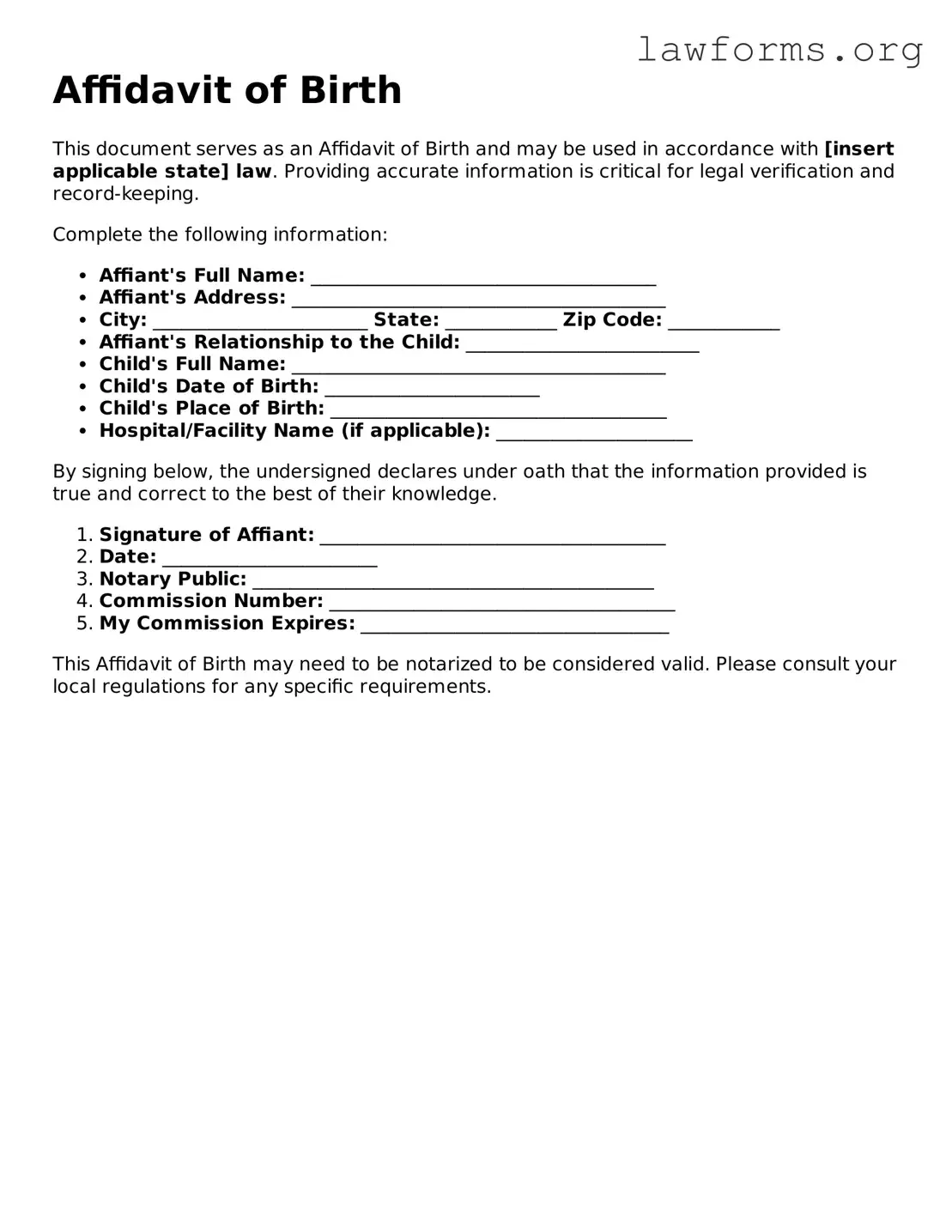Affidavit of Birth
This document serves as an Affidavit of Birth and may be used in accordance with [insert applicable state] law. Providing accurate information is critical for legal verification and record-keeping.
Complete the following information:
- Affiant's Full Name: _____________________________________
- Affiant's Address: ________________________________________
- City: _______________________ State: ____________ Zip Code: ____________
- Affiant's Relationship to the Child: _________________________
- Child's Full Name: ________________________________________
- Child's Date of Birth: _______________________
- Child's Place of Birth: ____________________________________
- Hospital/Facility Name (if applicable): _____________________
By signing below, the undersigned declares under oath that the information provided is true and correct to the best of their knowledge.
- Signature of Affiant: _____________________________________
- Date: _______________________
- Notary Public: ___________________________________________
- Commission Number: _____________________________________
- My Commission Expires: _________________________________
This Affidavit of Birth may need to be notarized to be considered valid. Please consult your local regulations for any specific requirements.
